More self-administered healthcare requires innovative packages that are tailored for patients and caregivers in a design-centric approach that also shows care for the planet, as these examples show.
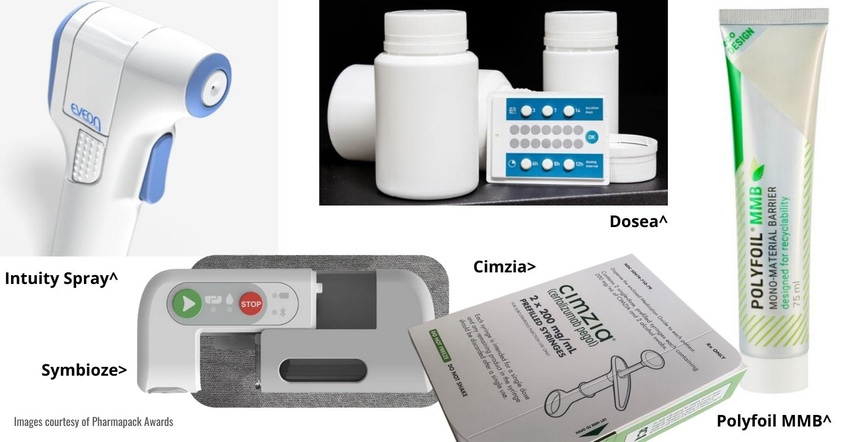
The pharmaceuticals market showed good health, as emphasized by 2021 figures, with an annual growth rate of 5% and global sales exceeding €1,100 trillion. The United States remains the main player with 47.5% of the market. Europe and Asia are almost equal partners at 23.5% and 22.5% respectively.
The main therapeutics are focused on oncology (17.2%), immunology (16.5%), and antidiabetics (11.6%). Pharmaceutical markets remain highly regulated, whether the product is prescription or over-the-counter (OTC) medicines. There are some differences related to administration routes (there are higher regulations for injectables, for example) and different users. [1]
Patients are not the only end users, though. Practitioners and caregivers can be in contact with drug forms, too. Different users have different needs that the pharma industry should take into account to create the best packaging solutions.
In all cases, for efficiency, a product should be correctly understood and used. Compliance is the greatest challenge for all drug forms, with better adaptation of products, whatever the diversity of their users and their drug forms [2,3]. Numerous improvements can be made, thanks to evolved packaging innovation. Packaging is now fully established as a major partner of healthcare products, having created many innovative designs.
Here are some great examples …
Well-designed packaging is useful and used.
Fundamentally, innovative packaging design can help reinvent products. We’ve seen such a huge evolution in the last two centuries: from a simple box to prefabricated flat packs, then the decades of automation through the digital revolution, and for now, the development of a fully smart pack that integrates connectivity [4].
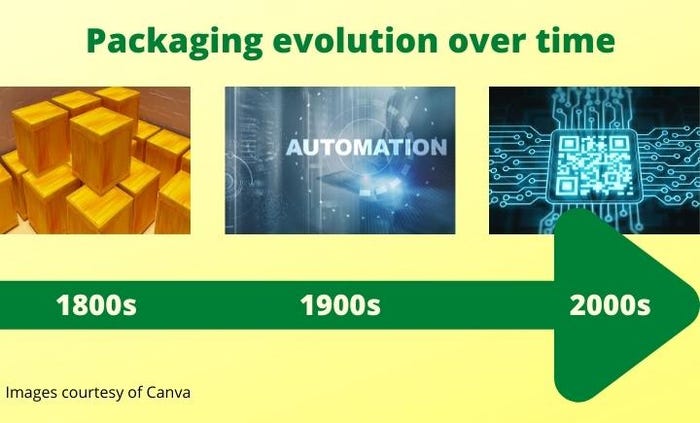
Regarding its etymology, the design integrates the product and its representation to create an object fully adapted in the everyday life use.
For the health sector, guidelines emphasize the protection for the patient (ICH Guideline Q9 on quality risk management), as well as a product designed to meet the user’s needs (ICH Guideline Q8 [R2] on Pharmaceutical Development).
A design approach often improves the therapeutic offer and increases patient compliance. A well-conceived drug will be more easily accepted and integrated in life behaviors [5]. This also correlates with eco-conception at all levels, by limiting the number of packaging components or by using a fully recyclable material.
For example, the new package from the Swiss company Körber goes one step further with a clever sustainable medical wallet with its all-in-one system that is both a tamper-evident seal and a convenient reclosure. This patient-friendly blister keeps its brand identity with this resealable system because the patient is able to continue to recognize the brand after opening.
Innovation gets smart and sustainable.
It seems like more information is always needed on packages. AR Packaging, part of Graphic Packaging, can help. Its integrated patient alert card runs through a uniquely advanced folding and gluing process. The small folding style (up to 8 panels) holds all relevant information for safety patient. Cards can be kept close in a wallet, easily detachable from the packaging, and conveniently used and carried by the patient in his or her pocket.
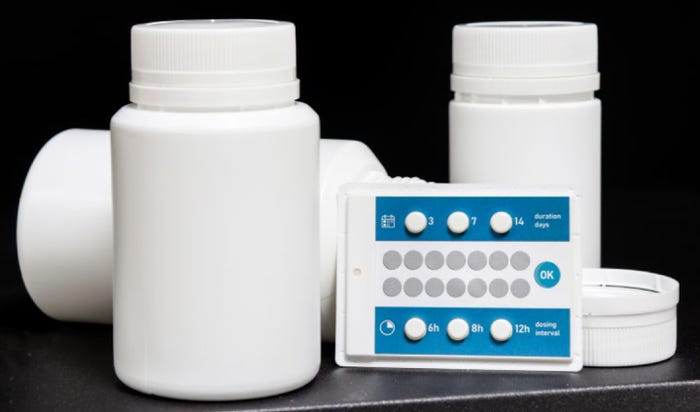
Another example is the Dosea smart label (above), which integrates a digital, smart, ultrathin label — which provides communication and alarm systems in integrated printed electronic circuits — with different types of pharma packaging. Three different systems have been developed: iDosea Basic is a simple, low-cost product; iDosea+ integrates an additional e-link screen; and Dosea Omni is an upgraded version with a sensor attached so all levels can be selected.
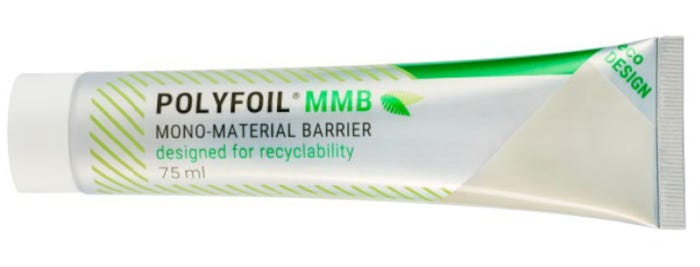
A recent example of sustainability, the well-known poly/foil material largely used for barrier in tubes is now available in mono-material-barrier (MMB): a fully recyclable pack from Neopac (above), which has won a sustainability award from Pharmapack in 2021.

A similar eco-conception approach is offered by UCB for its new Cimzia Pack (above). This shifts the paradigm of pharmaceutical packaging based on actionable insights collected — focusing on package size, recyclability, sustainability, and waste — that enabled this pack to win the Pharmapack 2021 Eco-Design Award for the Health Product category.
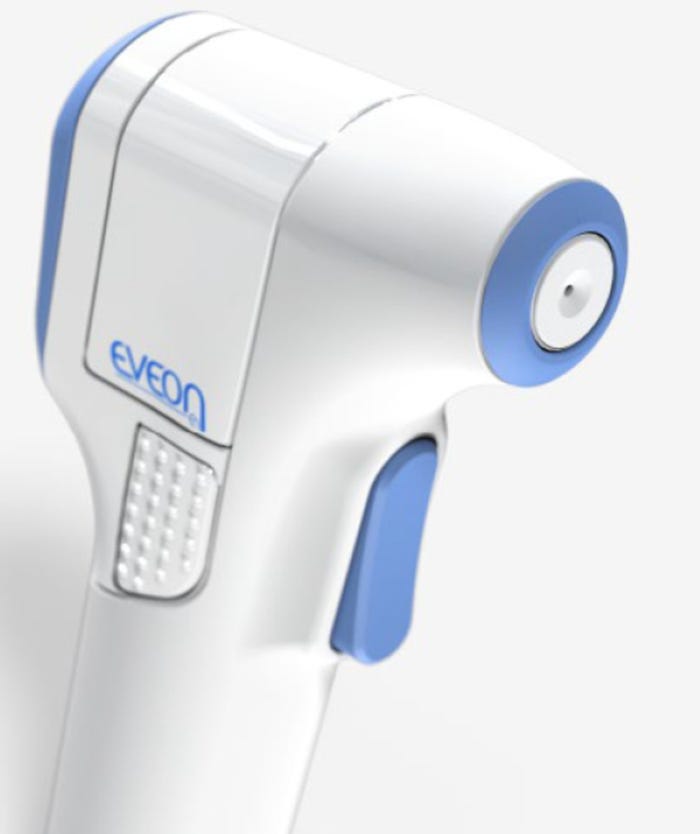
Innovation should combine functions for the best use, whatever the product. For example, the Pharmapack 2021 winner for Route of Administration is Intuity spray (above), a reusable device that dispenses an accurate airless spray or mist for a large range of liquid and gels. This product is used for various applications, such as respiratory, dermatology or oral.
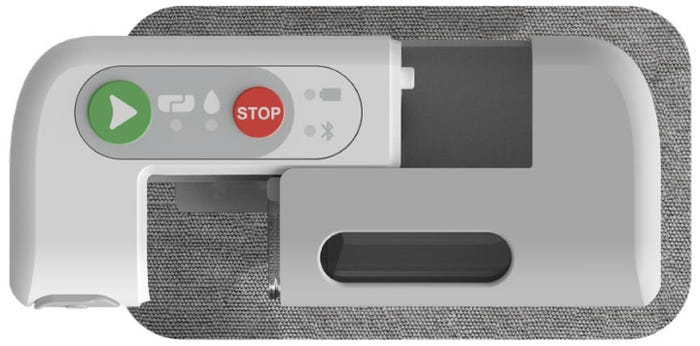
Here’s a similar reusable system: Symbioze (above), created by Nemera, won in the Pharmapack Connectivity Devices and Wearables category. This is a smart, on-body injector platform, user-friendly and sustainable. This solution is fully dedicated to self-injection medication at home, which is an increasing sector thanks to more and more chronic diseases requiring a regular injection.
Now, repositioning care from specialist centers to home settings requires safe and efficient solutions, that need to be tailored for various groups of users with a design-centric approach. Safe and intuitive use of products — that avoids any stigmatization and offer helpful assistance for all drug forms and all users — is definitely the challenge for all devices. At the same time, all packaging (from primary to secondary) is a full partner for drug forms integrated with a device for the best use and the best eco-concept with new sustainable materials.
All these new healthcare products — with innovative packaging technologies that do not forget to take care of the planet — definitely usher in a new era of “less is more products” that serve the patient and the healthcare system for the better. Such exciting stories to follow …
References
1 – Gauthier, P. “A complete world of design adaptation and product specificities for injectable drugs.” Ther. Deliv. (2017), 8, (11), 933–937
2 – Gauthier P. “Le packaging pharma à l’ère du less is better,” The Pharmaceutical Post (2021), October, 58-102-106.
3 – Gauthier, P. “Packaging Pharma that take care of patients and planet.” Chemistry Today (2022), 40 (1), 58-60.
4 – Garner, L. “Two centuries of packaging.” Inspire Iggesund, 2020, 65, 2.
5 – Gauthier, P. “Is design a weapon to make packaging more innovative?” Aerosol Europe, 2018, 26 (6) 15,17.
About the Author(s)
You May Also Like


